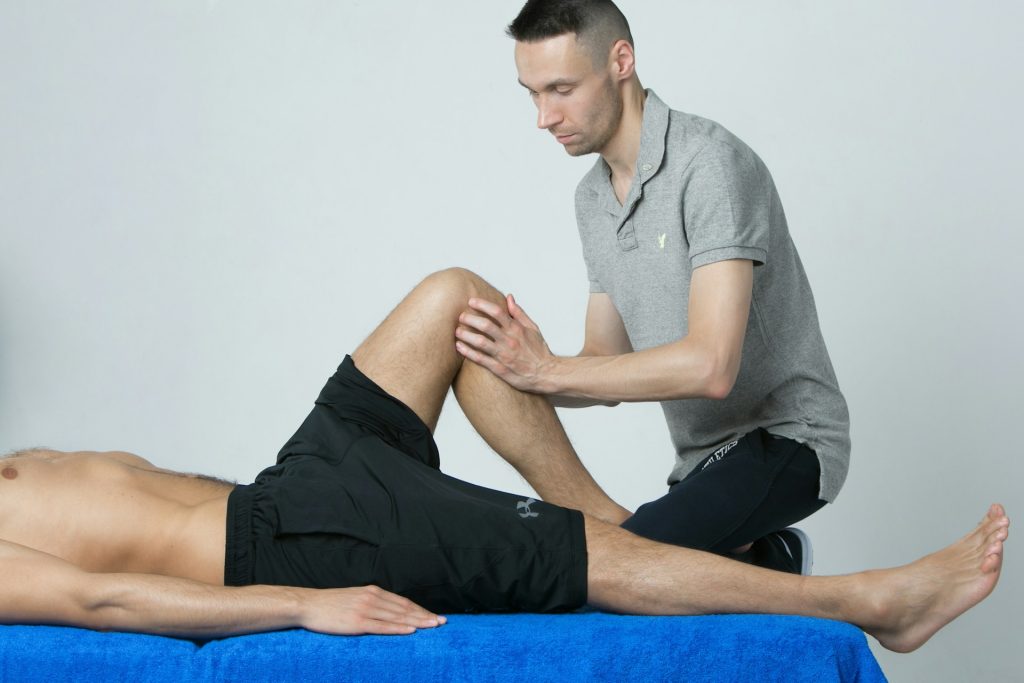Finishing physical therapy can feel like turning a page. You’ve followed the sessions, the exercises, and maybe even celebrated small wins. But then, the pain starts to creep back in. It can be frustrating when the progress you made doesn’t seem to last—or worse, when joint pain returns even stronger than before. If you’re in Scottsdale or Phoenix and this sounds familiar, you’re not alone.
Post-therapy flare-ups can happen for a few reasons, and understanding those reasons is the first step to moving forward. Whether you’ve finished physical therapy recently or it’s been a while, spotting the signs early and knowing what to do when they show up can make a big difference in your recovery and long-term comfort.
Understanding Why Joint Pain Returns After Physical Therapy
Physical therapy for seniors often works well to reduce pain and improve range of motion, but it isn’t always the end of the road. Even after completing a full program, some pain can come back. This doesn’t always mean the therapy failed. Sometimes life gets in the way, or the body responds in ways we don’t expect.
Here are some of the more common reasons pain might show up again:
1. Overuse of the Area: Once the pain subsides, it’s easy to jump back into old habits. Lifting heavy grocery bags, climbing stairs quickly, or standing too long can overwork healing joints.
2. Skipping Follow-Up Exercises: Rehab homework matters. When post-therapy routines get skipped, the muscles around the joints weaken again, putting pressure right back where it hurts.
3. Existing Health Conditions: Conditions like arthritis can cause flare-ups over time, even if therapy helped calm things down in the short run.
4. Poor Posture or Movement Patterns: Sometimes we go right back to the body mechanics that caused the issue in the first place.
5. Changing Weather: In places like Scottsdale and Phoenix where summers are extreme, joint tissues may respond differently to heat, humidity, or dehydration.
Take someone who finishes therapy for knee pain, for example. They might feel great for a few weeks and think it’s fine to go on longer walks again. But without enough strength and support in the surrounding muscles, that same knee can quickly start aching again. Recognizing cause and effect here isn’t always simple, but it helps minimize repeat issues.
Signs That Joint Pain Is Returning
Sometimes a little soreness is just that—harmless and temporary. Other times, it’s your body signaling something’s off. Knowing the difference lets you respond early before things get worse.
Here are a few signs that joint discomfort might be more than ordinary stiffness:
– Pain that sticks around for more than a few days
– Swelling or warmth in the area that wasn’t there before
– A popping or grinding sound when moving the joint
– Reduced range of motion or stiffness in the morning
– Feeling weaker when doing tasks that used to feel easier
These changes don’t need to feel extreme to merit attention. It’s more about how consistent they are and whether they start getting in the way of everyday things like bending down, grabbing something from the floor, or getting in and out of a car.
If the discomfort reappears during light movement or increases with each passing week, that’s your green light to reassess what’s going on. The goal is to stay ahead of the pain, not chase after it once it becomes too big to ignore.
Strategies to Manage and Prevent Recurrence of Joint Pain
When joint pain comes back after physical therapy, it can feel like a step backward. But there are ways to manage the return and reduce the chances of it turning into a regular thing. A few small adjustments in daily habits and routines can go a long way.
Try these practical steps:
– Stay active, but know your limits. Low-impact activities like walking or water aerobics keep joints moving without putting too much pressure on them.
– Stick with a basic follow-up routine. If the therapist gave you exercises, continue doing them regularly even if you feel fine. Skipping maintenance work can lead to setbacks.
– Watch your posture. Standing or sitting the wrong way, even for short stretches, can stress your joints without you noticing at first.
– Use assistive tools. Grab bars in the shower, a cane for balance, or supportive footwear can take pressure off certain joints.
– Listen to your body. Stop before pain sets in. Doing too much too soon is a common reason discomfort comes back.
Eating habits play a role too. Foods rich in fiber, protein, and nutrients help the body recover and stay strong. Staying hydrated, especially during Scottsdale and Phoenix’s hot months, supports joint health and may ease stiffness. Protecting the body also means giving it plenty of rest. Joints that never get a break may not get a chance to heal fully.
When to Seek Professional Help Again
If you’ve already done physical therapy and experience lingering or returning joint pain, it’s worth checking in with a healthcare provider. Pain that keeps you up at night or limits everyday tasks like walking, bending, or lifting usually needs more than quick fixes at home.
Sometimes people wait too long, thinking minor issues will just go away. But early help can keep those minor issues from turning into bigger setbacks. In many cases, a new round of therapy may not be as involved as the first go. A professional might be able to adjust your treatment based on progress already made, focusing on problem areas that need extra attention.
Check-ins and follow-ups are another reason to return. They’re useful for catching issues early, adjusting exercises, or learning new ways to make daily life easier. This doesn’t mean starting from scratch. It just means being proactive before long-term problems take root.
For seniors in Scottsdale and Phoenix, having a go-to place for reliable support can reduce stress. Whether it’s regaining mobility or managing flare-ups, working with someone who understands your history helps get the care that fits your needs now rather than what worked six months ago.
Keeping Joints Healthy Year-Round in Scottsdale and Phoenix
Scottsdale and Phoenix summers can be hard on anyone, but aging joints may need a little more attention when the temperatures rise. Staying ahead with smart habits helps your body handle the heat and reduces unwanted flare-ups.
Here are a few warm-season tips that give joints a break:
– Stay out of direct heat by walking early in the morning or later in the evening
– Use AC or fans indoors to lower the risk of overheating during stretches or light routines
– Keep a water bottle nearby during activities and meals to stay hydrated
– Take more breaks during yard work or errands
– Wear breathable shoes with good support when walking outdoors
Extreme heat can sometimes lead to dehydration without obvious warnings. And when you’re slightly dehydrated, joints might feel stiffer or more irritated than usual. Getting ahead of this helps protect the progress made during therapy.
By adjusting your daily routine to match the season, you’re doing your joints a favor. Over time, even minor efforts like evening walks instead of midday outings can reduce unnecessary wear and tear on vulnerable joints.
Finding the Support You Need
When joint pain comes back, you don’t have to go through it alone. Many people feel discouraged after finishing physical therapy only to face new aches and pains a few weeks or months later. But the truth is, this is a common part of recovery that can be managed with the right plan in place.
The key is building on what you’ve already learned and surrounding yourself with support that keeps your goals on track. Whether it’s checking in with a professional, adjusting your routine, or getting back into a guided program, each step counts. With attention, consistency, and the willingness to ask for help when needed, many people find their way back to more comfort and more confidence.
If you’re dealing with the frustration of joint pain returning and want to explore effective options, consider the benefits of physical therapy for seniors. Eightlimfit offers programs tailored to meet the unique needs of seniors, helping you stay active and comfortable in Scottsdale’s vibrant community. Let our experienced team support you in maintaining your mobility and improving your quality of life.

